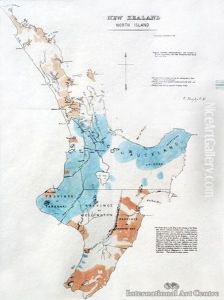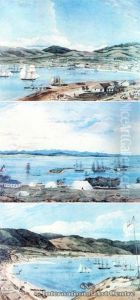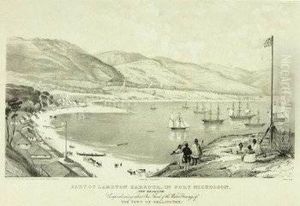Charles Heaphy Paintings
Charles Heaphy was a British-born New Zealand explorer, painter, and soldier who made significant contributions to the early documentation and mapping of New Zealand's landscapes and Māori culture. Born in London, England, in 1820, Heaphy's early life was marked by an interest in art and exploration, leading him to pursue a career that would blend these passions in the colonial context of New Zealand.
Heaphy arrived in New Zealand in the early 1840s as a draughtsman for the New Zealand Company, an organization involved in the colonization of New Zealand. In this role, Heaphy was responsible for creating some of the first detailed maps and sketches of New Zealand's coastlines, terrain, and Māori communities. His works during this period were crucial in promoting New Zealand as a desirable destination for European settlers and investors. Heaphy's paintings and sketches were among the first to capture the unique landscapes and indigenous cultures of New Zealand, providing invaluable records of the country's early colonial history.
In addition to his contributions as an artist and mapmaker, Heaphy also played a role in New Zealand's colonial military conflicts. He served as a soldier and was the first and only soldier of the New Zealand armed forces to be awarded the Victoria Cross, Britain's highest award for gallantry in the face of the enemy, for his actions during the New Zealand Wars. Heaphy's diverse career also included periods of service as a government official and explorer, where he continued to contribute to the development and understanding of New Zealand's geographical and cultural landscape.
Charles Heaphy's legacy is preserved through his extensive body of work, including paintings, sketches, and maps that provide a visual history of New Zealand's early colonial period. Heaphy died in 1881, but his contributions to New Zealand's art, culture, and history continue to be celebrated. His works are held in high regard and can be found in museums and collections throughout New Zealand and internationally, serving as a testament to his enduring impact on the country's historical and cultural heritage.


